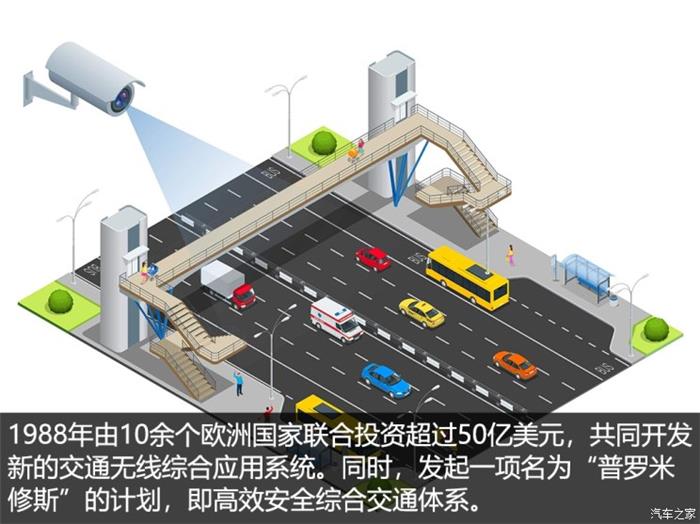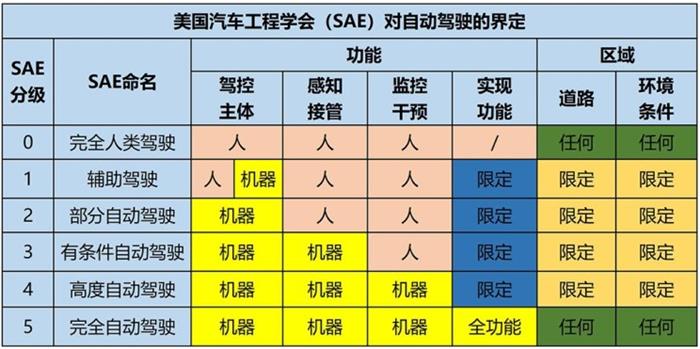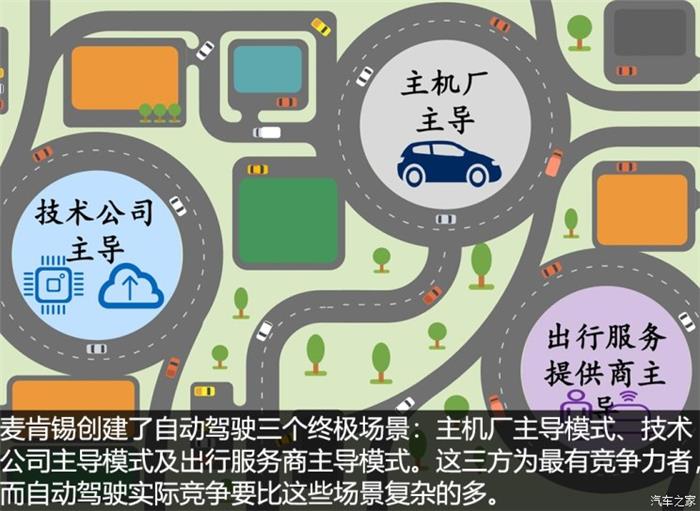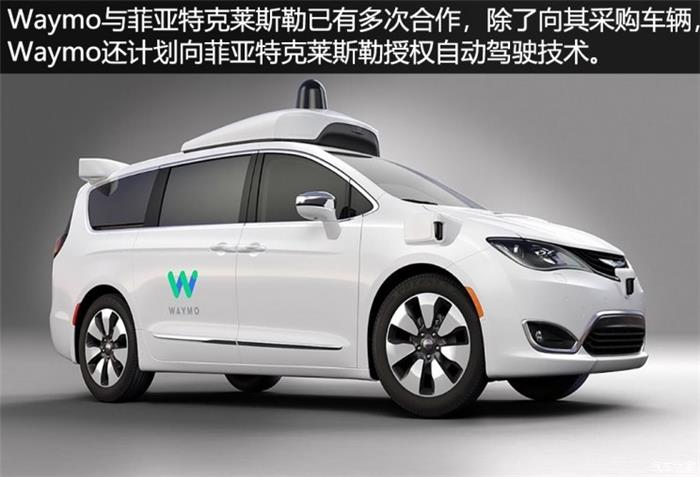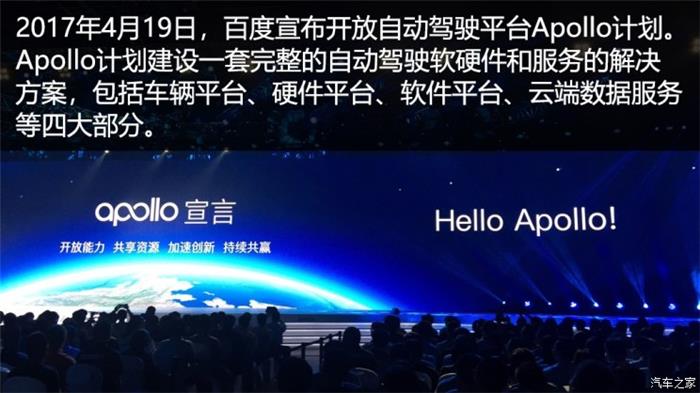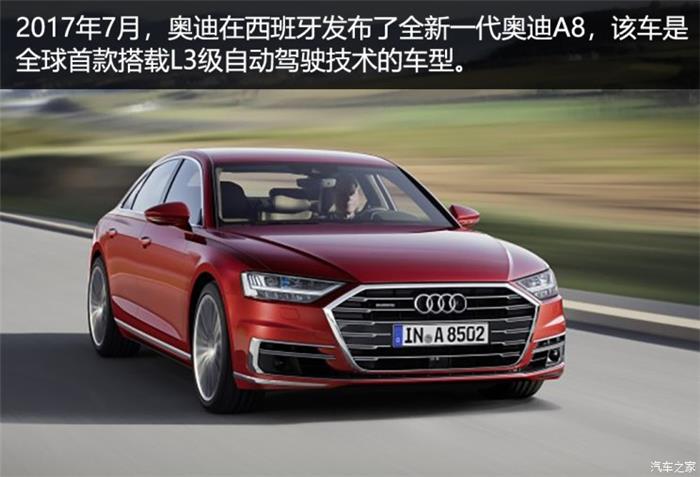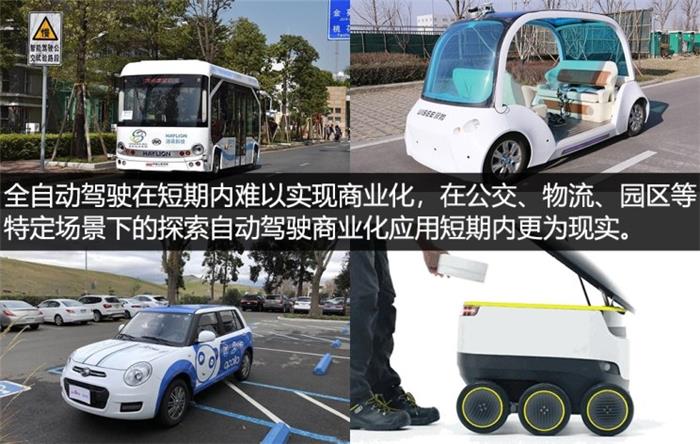Intelligentization and electrification are two important trends in the current automotive industry transformation. After nearly 10 years of market cultivation, new energy vehicles have significantly improved product performance. In the newly released new car recommendation list, the proportion of pure electric vehicles with a battery life of 300km or more is already close to 50%, and the energy density of a powered battery system is up to 160Wh/kg. As the products continue to mature, car companies began to compete around the performance of electric vehicle products. From June 24th to 29th, the car home electric car challenge competition held in Qinghai Province attracted eight companies to display 12 products. Different from the development of motor vehicle electrification, the development of intelligent cars has only just begun. Car intelligence is considered to be a new trend with more revolutionary significance in the industry. This is mainly because smart cars blur the borders between the automotive industry and communications and IT industries. New technologies are rapidly rushing into the automotive industry, which is likely to break the current trend toward OEMs. As the core of the automobile industry pattern. What is a smart car? Why does the arrival of smart cars reshape the industry? This article will give you a detailed analysis. Read the full text in one minute: â– What is a smart car? As part of the intelligent transportation system, smart cars are not a new concept abroad. As early as 1984, Japan began the research of the road-vehicle communication system, which is the basis of the car navigation system. At the same time, Europe started the "Prometheus Plan", which is an efficient and safe European transportation system plan. The United States also carried out a smart car road system plan in the same period. Yu Zhuoping, the assistant president of Tongji University, said that in the past 30 years, the exploration of intelligent transportation in developed countries has not stopped, but development is not fast. In recent years, the rapid development of IT technology has brought new opportunities for smart cars and intelligent transportation, and smart cars have also begun to get hot. In 2015, the State Council issued "Made in China 2025," and smart cars appeared for the first time in national strategic policy documents. In January 2018, the National Development and Reform Commission issued the "Intelligent Automobile Innovation and Development Strategy" (draft for comment), which defines the smart car: Smart car refers to the use of advanced sensors, controllers, actuators and other devices, the use of information and communications, the Internet New technologies such as big data, cloud computing, artificial intelligence, etc., have a new generation of automobiles that are partially or fully autonomously driven, and which are transformed from simple transportation vehicles to smart mobile spaces. Smart cars are also commonly referred to as smart networked cars, self-driving cars, driverless cars, and so on. According to the American Society of Automotive Engineers (SAE) regulations, automatic driving is divided into six levels of L0-L5. The L0 level means no autopilot function, L1 and L2 are advanced driver assistance driving levels, L3 means conditional autopilot, ie the driver can leave the steering wheel with both hands under certain conditions, L4 and L5 refer to highly autopilot and Fully automatic driving. L5 automatic driving is the highest state of development of smart cars. Wan Gang, chairman of the China Association for Science and Technology, once said that electric vehicles are the best carrier for the development of smart cars. This is mainly because electric vehicles are driven by pure electric power. Most parts and components can have chips and they can all be electronically controlled. At present, the transformation of automotive electric vehicles has become a general trend. Domestic and foreign vehicle companies have all placed electric vehicles as one of the major directions for future development. Intelligentization will be another major industry development trend following the transformation of electric vehicles. Yu Zhuoping believes that the motivations for the transformation of the automobile's intelligent and electrified are different. The motorized transformation of automobiles is the result of pressures such as energy problems and environmental issues, which are strongly driven by the government. The intelligent transformation of automobiles is the result of cross-industry competition with the development of IT technology. In 2009, Google took the lead in announcing its plan for a self-driving car. After that, Internet companies such as Baidu, BMW, General Motors and other auto companies also announced plans to develop autonomous driving. The development of smart cars involves three key technologies: environmental awareness, environmental decision-making and control execution. As some of the technologies outperform conventional automobile manufacturing, smart cars have attracted companies outside the automotive industry, including Internet companies, map service providers, and chip companies. The intelligence of a car is a single intelligence that can contribute to traffic safety. However, in the real traffic environment, information can be transmitted between vehicles and communication can be achieved, which will further improve traffic safety. The connection and communication between vehicles requires the introduction of car networking technology. Through the car networking technology, it is possible to achieve the connection between cars and cars and the connection between cars and roads to form a car-road-cloud intelligent transportation network. The networking technology has great potential in the field of intelligent transportation, and has attracted the giants of the communications industry to the automotive industry. The borders of the auto industry are increasingly blurred, and companies that are trying to infiltrate into the automotive industry are pursuing their own wishful thinking and are eager to become "cardholders" in the smart car sector. They hope that they can become the rule-makers for the new round of games. â– Battle of the three armed forces of automatic driving Autopilot is the top part of the pyramid of smart cars, and companies in all fields are scrambling to arrive first. The world-famous analyst McKinsey will enter the most powerful auto-piloting companies into three forces, namely vehicle companies, technology companies and travel service providers. McKinsey pointed out that the most important ability to seize automatic driving tuyere is: software development, hardware production, system integration, travel services, vehicle operations and management. In the above-mentioned areas, the three forces have their own advantages and may become the winners in the future. This poses a challenge to the traditional automobile industry with the host industry as the core. Why does autopilot have the power to reshape the auto industry? This will also start with a current hot business model of "shared travel." Technology companies and travel service providers generally believe that if the car is convenient enough, humans may not need to own a car at all. Based on this judgment, they began to focus on improving vehicle efficiency and reducing the cost of vehicles. Autopilot is the key technology that can release this business model tremendous energy. If autopilot reaches the highest level of maturity, the user's car will be as convenient as having a private driver. When you need to use the car to place orders through your mobile phone, the vehicle will pick you up to pick you up. At the same time, shared cars without human drivers will greatly reduce travel costs. Although there is no definitive answer to the question of whether “mankind must own a carâ€, it still makes traditional car makers panic. The increase in vehicle efficiency brought by automated driving means that the reduction in the demand for vehicles is equivalent to indirectly cutting away the cake in the auto market, and the more face-to-face competition after this is competition for consumers. The combination of automatic driving and shared cars directly translates vehicle buyers into vehicle users. Consumers do not need to pay for the products and instead pay for the services, and profits will flow to the service providers. It is based on this concern that in recent years, international auto giants such as BMW, Toyota, and General Motors have announced their transition to mobile travel service providers. Traditional car companies do not have the ability to take absolute advantage in the core technologies of perception, decision-making and implementation involved in autonomous driving technology, especially in the first two areas, and they are also the strengths of technology companies such as Nvidia, Intel and Mobileye. Proactively embrace technological change, pressure-driven, and auto companies do not dare to neglect the layout of the auto driving field. According to the United States market research organization Navigant Research released in January this year, the ranking report of the field of automatic driving, the top ten companies are GM, Google, Daimler - Bosch, Ford, Volkswagen, BMW - Intel - Fiat Chrysler, Ambow, Renault - Nissan, Peugeot Citroen. It can be seen that, despite the challenges faced by technology companies and travel service providers, the layout of traditional auto manufacturers in the field of automated driving is still dominant. However, the competition in the field of automatic driving is a marathon. How to maintain the rankings on the track and be able to take the lead is a question that every company is thinking about. At present, both technology companies and OEMs continue to increase investment in the field of automated driving. In June of this year, the top two companies on the above list have issued heavy news. Google announced that it will purchase 62,000 plug-in hybrid vehicles from Fiat Chrysler to expand its self-driving fleet. At about the same time, General Motors announced that Cruise Holdings, its own automated driving platform, had received a US$2.25 billion investment from Japan Softbank Group. Although the three-party forces of vehicle companies, technology companies, and travel service providers are obvious competitors in the auto-pilot contest, cooperation is still the main theme of this battlefield. Qi Xiu, chief economist of Xie science and technology, believes that auto-pilot is a fairly long track, and a single company simply cannot support it. McKinsey also believes that no company can independently master all the capabilities of automated driving, and building an autonomous driving alliance is very important. Autopilot is not a breakthrough of single point technology but a collection of system technologies. Among the three parties, the main advantages of vehicle companies are concentrated in hardware production, vehicle verification and integration, while technology companies have advantages in software development, vehicle interconnection, etc., while auto operators occupy a large number of advantages in different travel scene data. And there is also accumulation in user services. At present, all three parties are actively absorbing all parties to form alliances. Taking Google as an example, in the Google’s Automated Driving Alliance, automakers include Fiat Chrysler, Honda, and the auto operator Lyft. Among BMW's autonomous driving alliances, there are BMW and Fiat Chrysler vehicle companies, as well as technology companies such as Intel and Mobileye, as well as Tier 1 and Delphi components suppliers. Uber has reached cooperation with companies such as Nvidia, Toyota and Daimler. Baidu has also set up the Apollo Plan, an open platform for autonomous driving, in an attempt to absorb the power of various fields. At present, it has more than 100 members. â– When will the autopilot arrive? Although automatic driving has a certain amount of imagination, fully-automated automatic driving cannot be realized in the short term. According to statistics from the National Information Center, foreign car manufacturers set the time point for mass production of self-driving vehicles above the L4 level to around 2021, and Chinese car manufacturers will set this target generally around 2025. However, even if the technology of the self-driving vehicle itself matures, full-automatic driving cannot really come in the short term. In addition to technological maturity, autopilot also faces many problems such as high cost of automated driving systems, imperfect infrastructure, and lack of regulatory policies. At present, there are two routes for the development of autonomous driving: one route is represented by the majority of vehicle companies and gradually increases from the L1 level of automatic driving; one route is represented by technology companies and operating companies and chooses to start directly from the L4 level. According to the “Intelligent Automotive Innovation and Development Strategy†(draft for solicitation of opinions), by 2020, the percentage of new vehicles in L1 and L2 grades of autonomous vehicles will reach 50%. In the next three years, L1 and L2 levels of autonomous driving technology will be gradually applied to production models. According to Jiang Jingfang, Vice President of Bosch Chassis Control Systems in China, vehicles equipped with Bosch L1 assistive driving have been mass-produced in 2014, and the current production model has exceeded 40 models. In the next two years, there will be production of dozens of models equipped with Bosch L2 assistive driving systems. As the world's largest supplier of automotive technology, Bosch's layout in the field of smart cars can basically represent the development trend of the industry. That is to say, the level of smart cars currently sold in the market is mostly around the L1 level, and L2 self-driving models will successively appear in the market in the next two years. At present, it is known that the models used to carry L2 autopilots include Geelyborui GE and Changan CS55 that will be available in the second half of the year. Audi is the most aggressive company in the application of autopilot technology in OEMs. In 2017, Audi released a new generation of Audi A8 equipped with L3 level autopilot system. L4 level autopilot is currently still in the road test phase. California is the world's largest area for autopilot technical support. As of June 20 this year, 56 companies have applied for autopilot in road tests in California. In April of this year, California also enacted a policy allowing the road test of autonomous vehicles under driver-free conditions. China has also introduced self-driving drive test management methods from this year. Currently, there are six cities in Beijing, Shanghai, Chongqing, Changsha, Changchun, and Guangzhou that are allowed to drive road tests automatically. Already, 11 companies have obtained domestic autopilot vehicle qualifications. In addition to conducting road tests on defined open roads, some companies have also begun to test autopilot technology in specific scenarios and explore the possibility of commercialization. Including the closed park auto-driving vehicle testing, short-distance logistics distribution, automatic car rental and other time-sharing. Summing up the full text: The wave of intelligent car transformation has come, although the huge wave of autopilot will not destroy the city of traditional car companies in the short term. However, the potential of intelligent vehicle transformation is already accumulating, and auto companies should continue to invest in building their own moats to maintain their dominant position in the upcoming stormy waves. Ridge Cap Roll Forming Machine Ridge Cap,Metal Roof Making Mahcine,Metal Roll Forming Mahcine Botou Hongyuan Forming Machine Co.,Ltd , https://www.tilemakingmachinery.com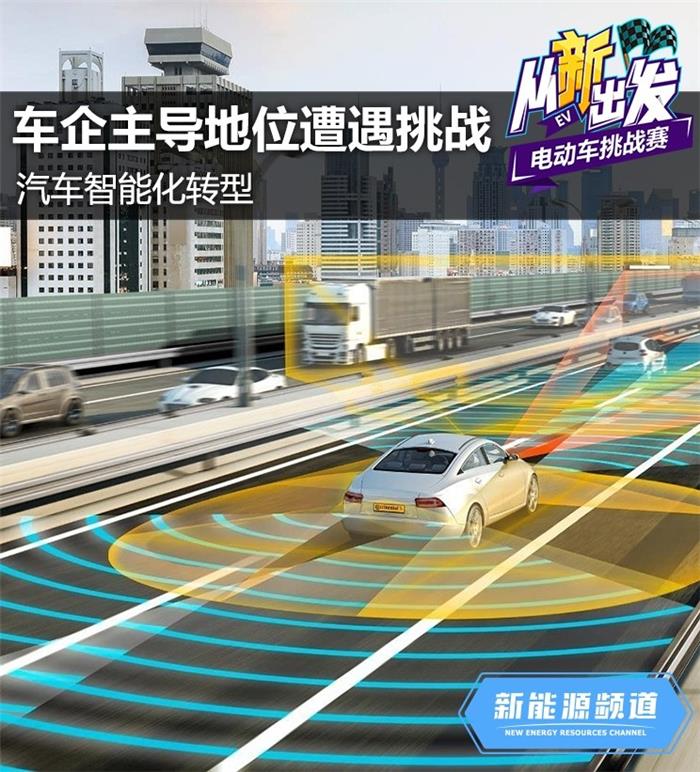
1. Intelligentization and electrification are two important trends in the current development of the automotive industry. Different from the policy-driven transformation of automotive electrification, the intelligent transformation of automobiles is driven by technological progress.
2. In the field of smart cars, vehicle companies, technology companies, and automotive operators have their own advantages. Companies in various fields are selecting partners and concluding a covenant. In the short term, it is still impossible to see which area will dominate the reform of the auto industry. Cooperation in building a smart car ecosystem has become an industry consensus.
3. Fully-autonomous driving is the highest level for the development of smart cars. At present, auto-driving also faces many problems such as the maturity of technology, lack of standards and regulations, and imperfect road infrastructure. 